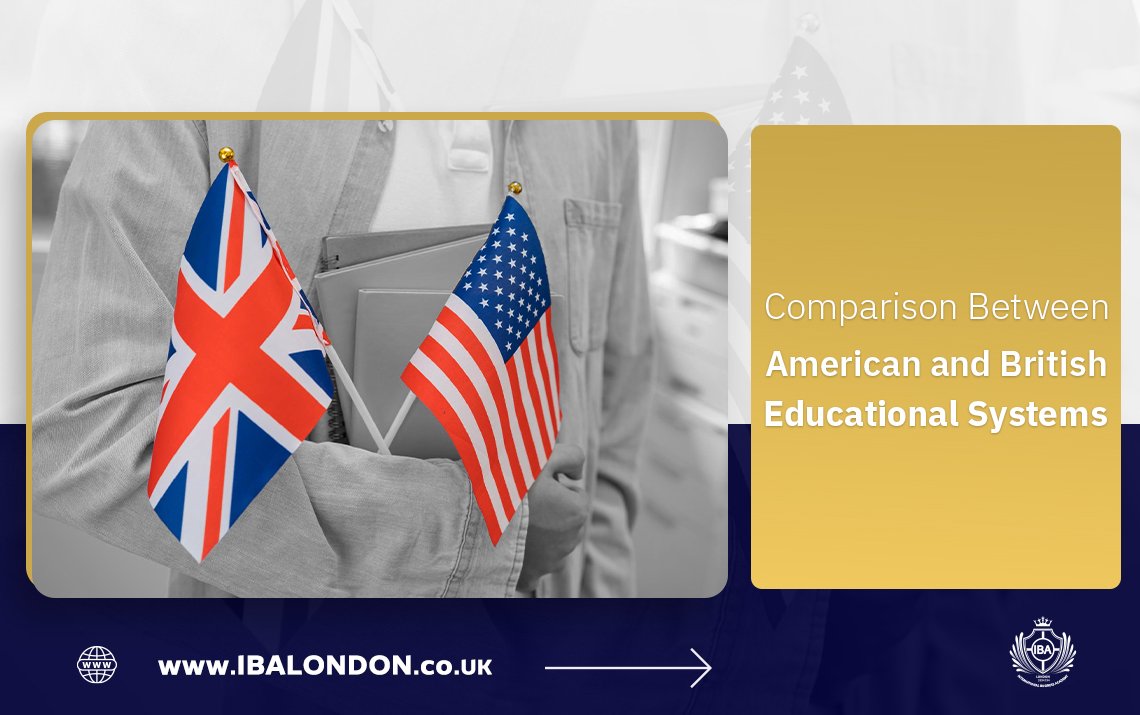
Comparison Between American and British Educational Systems
Comparison Between American and British Educational Systems: A Global Perspective
In an increasingly interconnected world, education has become the passport to global citizenship. For students and professionals exploring international qualifications, understanding the differences between educational systems is key to making informed decisions. Two of the most widely respected and influential models are the American and British systems. While both aim to prepare learners for personal and professional success, they differ significantly in structure, philosophy, and delivery.
At IBA London, where global learning meets strategic education, we regularly support students navigating between these two systems. Whether you’re pursuing a diploma, an undergraduate degree, or a doctoral qualification, understanding these differences can help you chart the most effective path for your career goals.
Academic Structure and Flexibility
British System
The British education system is known for its early specialisation. Students typically select their area of focus—such as business, law, or engineering—before beginning their university studies. Undergraduate degrees usually last three years (or four in Scotland), and students dive deep into their chosen discipline from the start.
American System
The American system, on the other hand, emphasises breadth before depth. Students in a typical four-year undergraduate programme are exposed to a wide range of subjects during their first two years, including humanities, sciences, and mathematics, before selecting a major in their third year. This allows for exploration and flexibility, especially for students who are undecided or have multiple interests.
Key Difference:
- UK: Focused and subject-specific from the outset.
- US: Broad and exploratory, with a liberal arts approach in early years.
Grading and Assessment
British System
Grading in the UK follows a classification system:
- First Class (1st): 70% and above
- Upper Second (2:1): 60–69%
- Lower Second (2:2): 50–59%
- Third Class: 40–49%
Assessments tend to be exam-heavy, especially at the undergraduate level. Coursework and dissertations gain more prominence in the final year or at the postgraduate level.
American System
Grades in the US are typically given as A-F letters and calculated into a Grade Point Average (GPA) on a 4.0 scale. Continuous assessment is the norm—students are graded on class participation, assignments, midterms, projects, and final exams.
Key Difference:
- UK: Fewer assessments, greater weight on final exams.
- US: Continuous assessment and GPA-focused.
Length of Study
- Undergraduate Degrees:
- UK: 3 years (4 in Scotland)
- US: 4 years
- Master’s Degrees:
- UK: 1 year (intensive and focused)
- US: 2 years (includes coursework and research)
- Doctoral Degrees (PhD/DBA):
- UK: Typically 3–4 years, research-driven
- US: 5–7 years, includes coursework, comprehensive exams, and dissertation
Key Difference:
The UK offers a faster route to graduation but often with a heavier academic load per term. The US provides more time for exploration and research preparation.
Teaching Style and Learning Environment
British System
The British academic tradition is deeply rooted in independent study. Lectures are supplemented by tutorials and seminars, where critical thinking and debate are encouraged. Students are expected to take responsibility for their learning, research, and time management.
American System
The American model is more interactive and supportive, with frequent student-teacher engagement. Professors are often accessible, and students are encouraged to participate in discussions, group work, and collaborative projects.
Key Difference:
- UK: Self-directed learning is emphasised.
- US: Structured learning with regular feedback and student interaction.
Tuition and Financial Aid
British System
Tuition fees in the UK are generally lower than in the US, especially for domestic and EU students. Postgraduate courses are also shorter, making the overall cost more manageable. However, scholarships for international students can be limited.
American System
US tuition fees are among the highest globally, particularly at private institutions. However, a wide range of financial aid, scholarships, assistantships, and grants is available, making education accessible for many.
Key Difference:
- UK: More cost-effective, shorter programmes
- US: Higher cost, but more financial aid opportunities
Curriculum and Academic Philosophy
British System
The British curriculum is exam-oriented and academically rigorous, often rooted in theoretical and research-based approaches. The emphasis is on mastering content deeply and becoming a subject expert.
American System
The American curriculum focuses on skills development, creativity, and practical application. It often incorporates internships, community projects, and cross-disciplinary learning, preparing students for real-world challenges.
Key Difference:
- UK: Deep academic knowledge and specialisation
- US: Holistic development and practical experience
Postgraduate Options: MBA and Doctorates
At IBA London, we bridge both systems. For instance, our MBA programmes follow the British format—intensive, one-year courses focused on executive readiness. In contrast, students pursuing dual degrees or doctoral pathways (like our DBA with Horizons University) benefit from blended models inspired by both British and American academic traditions.
The DBA (Doctor of Business Administration) is more practice-oriented (as in the UK system), but also includes structured coursework and modular support reminiscent of the American approach.
Cultural and Social Experience
Studying in either system offers rich cultural exposure, but the student life differs.
UK universities tend to be city-based, with students often living off-campus after the first year. Student unions, academic societies, and sports clubs are common, but the experience is generally more independent
US universities often have a campus-centric culture, with dormitories, Greek life, sports events, and a strong sense of community and identity.
Key Difference:
- UK: Academic-focused, more autonomy
- US: Community-focused, more immersive campus life


